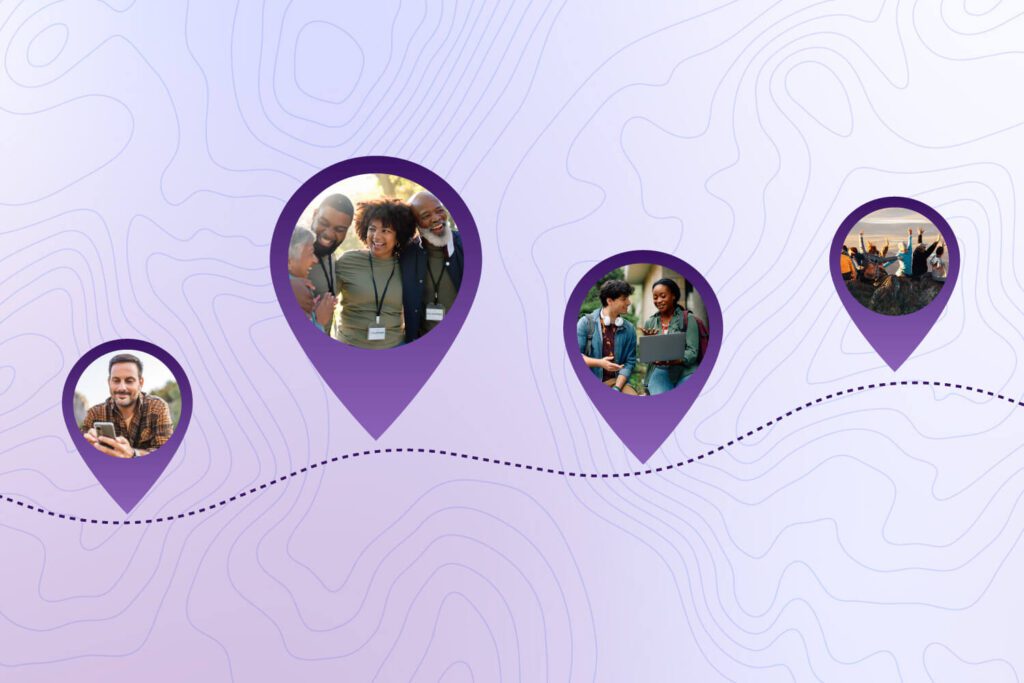How can social services leverage remote service delivery?

As a public healthcare provider, your clients need to continue receiving essential support and care from your organization even in a crisis. Thankfully, there are secure and user-friendly web-based software tools, clinical procedures, and administrative practices that ensure your services are available to those in need—all while maintaining the health and safety of your team.
In this guide, we’ll explore how public agencies and other social services organizations can leverage remote service delivery.
Integrated telehealth and remote service delivery
Leveraging telehealth and other remote service delivery tools allow you to provide continuous care and value to clients without meeting in person. For example, you could use a video conferencing platform to host virtual counseling sessions.
Remote service capabilities should be seamlessly integrated with your existing case management system so you can continue to input and track client and service information. This maintains your organization’s single source of truth and eliminates data silos. Integrating telehealth tools with your case management system also allows you to:
- Track case and session notes with the same accountability and clarity as face-to-face sessions.
- Manage service and appointment requests online in a client-focused, automated manner.
- Keep your staff safe and connected to your organization’s clinical and administrative operations.
- Extend your services’ reach to remote and rural areas without needing to travel.
- Bill clients and facilitate secure payment for services via credit card or PayPal, reducing the financial risks associated with current events.
By implementing remote service, you can maintain strong connections with your clients and uphold their expectations for your organization.
Automated client engagement and monitoring tools
Scheduling regular meetings to keep in touch with your client base—particularly those who need the most intensive care—is easier when you’re able to meet them in-person. When you need to meet remotely, use remote service delivery to automatically send out pre- and post-session documentation like service planning documents and assessment tools for clients to complete online. This ensures that clients will not experience service delivery interruptions and allows you to continue providing them with the care they need.
Consistently monitoring the general health and well-being of your clients is also essential. Get regular updates by sending structured self-assessments on a regular cadence through your clients portal.
Case management software also provides insight into high-priority situations. Set up specific triggers and alerts within your case management system based on client responses to bring attention to any concerning cases. Then, your case management software can automatically escalate these cases within your organization.
These innovative automation capabilities provide a low-cost, high-impact way to track your clients’ needs while making sure nothing falls through the cracks.
Allowing your clients to stay in contact with their service providers using secure messaging capabilities helps preserve positive patient-provider relationships. This opens up a new channel for engagement, helping clients feel more at ease in times of crisis and uncertainty. Using alternative communication methods also gives your staff the opportunity to engage in clinical discussions with their clients as needed, all within your existing case management system.
Remote staff collaboration and productivity
With the increased popularity of remote and hybrid work, your staff can be just as dispersed and remote as your clients are.
This means it’s more important than ever to make sure all members of your workforce—from full- and part-time workers to volunteer staff—stay connected.
Use a secure software solution to distribute sensitive information quickly and securely. Plus, your staff can use it at any time, anywhere. This can be done using communication tools like messaging applications that are built into your system or external tools like video conferencing platforms that are integrated with your system. Video conferencing tools are especially useful when providing service remotely because they give staff a way to continue their care coordination, team meetings, case discussions, training, and other day-to-day operations.
Real-time access with notifications, alerts, and workflow triggers allows staff to act in a timely manner. Having these tools integrated with your business practices and clinical policies and procedures makes everything run more smoothly.
End-to-end remote service management
The world is changing quickly, and it’s critical that your organization has systems and processes in place that can help you evolve alongside it. Today, it’s crucial to have one central and accessible system to manage all your services, facilitate communications, and keep staff and clients connected—the right case management software can help you do exactly that.
Ready to Get Started?
Work with Bonterra



